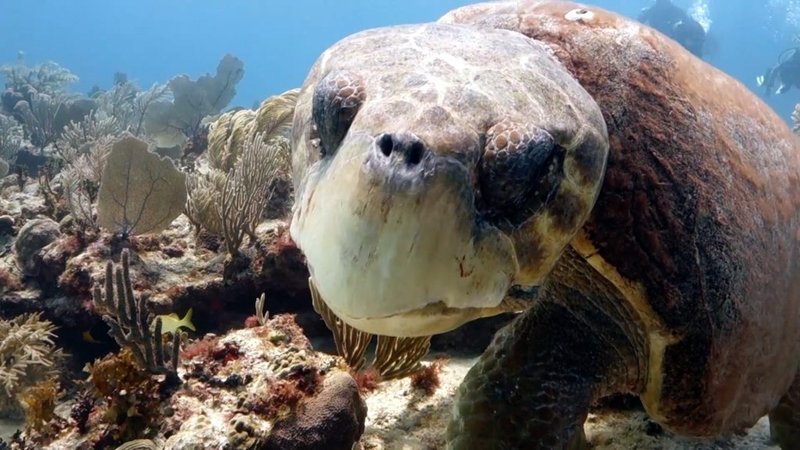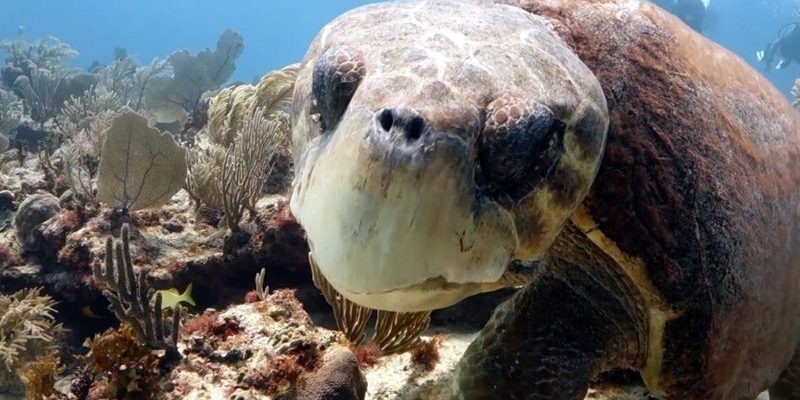
Imagine a creature that has existed for millions of years, effortlessly navigating the vast oceans while managing to evade some of the biggest threats. That’s the loggerhead turtle for you! With their distinctive heart-shaped shells and powerful jaws, these turtles have cultivated a unique lifestyle that’s as intriguing as it is important to our marine ecosystems. So, pour yourself a cup of coffee, and let’s explore ten things about loggerhead turtles that you probably didn’t know.
1. Loggerhead Turtles Can Weigh Over 300 Pounds
Loggerhead turtles are among the heaviest of all sea turtles. Depending on the region and environmental conditions, these turtles can weigh anywhere from 200 to 400 pounds. It’s like carrying the weight of a small adult in their shells! Their large size serves a purpose, as it provides them with better buoyancy in the water and helps them dive deeper for food.
When they’re fully grown, loggerhead turtles can measure up to about 3 to 4 feet in length. To give you a clearer picture, that’s about the length of a large dog! Their robust bodies help them withstand ocean currents and predators, making them one of the ocean’s resilient survivors.
2. They Have a Unique Diet
Loggerhead turtles are omnivores, which means they enjoy a varied diet. But here’s the kicker: they have a taste for certain foods that might make some of us squeamish. Loggerheads primarily feast on jellyfish, crabs, and other invertebrates. Their powerful jaws are designed specifically to crush the hard shells of crabs and other sea creatures.
Honestly, it’s quite fascinating how they can munch on jellyfish—an animal that many other species avoid. This diet not only keeps them well-fed but also helps control jellyfish populations in the ocean. It’s a win-win situation for loggerheads and the marine ecosystem!
3. Loggerheads Can Travel Thousands of Miles
Prepare to be amazed: loggerhead turtles are some of the best travelers in the animal kingdom. They migrate thousands of miles each year between feeding and nesting grounds. For instance, a loggerhead turtle born on a beach in Florida might swim all the way to the shores of Portugal! Imagine making such a long journey while navigating through busy oceans filled with both dangers and beauty.
What’s even more mind-blowing is their ability to navigate these waters precisely. Scientists believe they rely on the Earth’s magnetic fields and their keen sense of smell to find their way. It’s like having built-in GPS systems!
4. Loggerheads Have a Very Long Lifespan
Loggerhead turtles are not in a hurry; they take their time growing up. In fact, they can live for over 50 years, with some estimates suggesting they might reach up to 70 years in the wild. This long lifespan is quite typical for reptiles, but it does come with challenges.
As they mature, loggerheads face various threats, including habitat loss, fishing nets, and pollution. The sad reality is that many don’t make it to adulthood, but those that do are truly remarkable survivors. Their longevity contributes to their ability to reproduce, as females can nest several times throughout their lives.
5. They Play a Critical Role in Marine Ecosystems
You might be wondering why loggerhead turtles are so important. Well, they do more than just look great gliding through the water. Loggerheads contribute significantly to the health of our oceans. As they feed on jellyfish and other invertebrates, they help regulate those populations, keeping the ocean ecosystem balanced.
Moreover, their nesting habits also have effects on beach ecosystems. When they dig nests in the sand, they help aerate the soil, which can benefit other species that rely on those environments. It’s a testament to the interconnectedness of life in the ocean!
6. Their Nests Can Hold a Lot of Eggs
Female loggerheads have a very special job each nesting season. They can lay between 100 to 200 eggs in a single nest, usually during the summer months. After laying eggs, they cover them with sand and head back to the ocean, leaving nature to take its course.
Here’s the thing: not all these eggs will hatch successfully. Predators, environmental factors, and human activities can affect hatch rates. However, those that do make it are like little adventurers, braving the sandy dunes to reach the water.
7. Loggerheads Are Threatened Species
Despite their ancient lineage, loggerhead turtles are now listed as *vulnerable* by the IUCN (International Union for Conservation of Nature). They face numerous threats in modern times, including fishing gear entanglement, plastic pollution, and climate change impacting their nesting sites.
Conservation efforts are crucial for their survival. Organizations and scientists are working together to create awareness and protect nesting sites. A little help from us can go a long way in ensuring these incredible creatures keep swimming our oceans for generations to come.
8. They Have Unique Migrations
One of the most fascinating aspects of loggerhead turtles is their migratory patterns. After hatching, they make their way to the ocean, where they often spend years in the open sea, a phase known as the “lost years.” During this time, they can travel along ocean currents and may not return to shore for several years.
When they do decide to come back, usually as adults, they return to the very beach where they hatched to lay their eggs. It’s like nature’s way of ensuring that the next generation has a chance to thrive, following the footsteps of their ancestors.
9. Loggerheads Can Hold Their Breath for Long Periods
If you think about how long you can hold your breath, you might be impressed by how long loggerhead turtles can do it! They can stay underwater for up to four hours if they’re resting. When they’re active, like when they’re swimming or foraging for food, they tend to resurface every 30 minutes or so.
This ability to hold their breath helps them evade predators and thrive in their underwater world. It’s also a testament to how well-adapted they are to their environment.
10. Loggerhead Turtles Are Social Creatures
Last but not least, loggerhead turtles aren’t as solitary as you might think. While they often enjoy their alone time, researchers have observed that during certain seasons, they can gather in groups, especially at feeding grounds. It’s a bit like a dinner party where everyone’s invited!
This social behavior can help them thrive, as feeding in groups allows them to take advantage of available resources more effectively. Plus, it’s a fascinating reminder that even these ancient marine reptiles enjoy a little company from time to time.
In conclusion, loggerhead turtles are remarkable creatures with unique traits that make them stand out in the oceanic landscape. From their impressive size to their crucial role in the ecosystem, they’re definitely worth celebrating. So, the next time you spot a turtle in the water or read about them in a conservation effort, you’ll know just how special they are!

